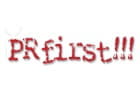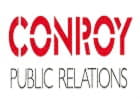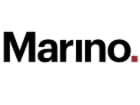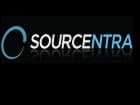NORWELL, Mass.--(BUSINESS WIRE)--Clean Harbors, Inc. (NYSE: CLH), the leading provider of environmental and industrial services throughout North America,today announced financial results for the fourth quarter and full year ended December 31, 2020.
“We concluded an outstanding 2020 with a strong fourth quarter,” said Alan S. McKim, Chairman, President and Chief Executive Officer. “While Q4 is typically a seasonally weaker period for Clean Harbors, our revenue grew nearly $17 million sequentially from the third quarter as some of our end markets continued their recovery from the pandemic. Our performance in the quarter was again led by our Environmental Services segment, where we achieved better-than-expected results due to a combination of high-value waste streams in our disposal network, strength in COVID-19 decontamination work and ongoing cost controls. We saw a significant increase in year-over-year margins in the quarter, marking our 12th consecutive quarter of higher Adjusted EBITDA margins.”
Fourth-Quarter 2020 Results
Revenues were $796.2 million compared with $871.0 million in the same period of 2019. Income from operations increased 18% to $61.7 million from $52.3 million in the fourth quarter of 2019.
Net income was $39.3 million, or $0.71 per diluted share. This compares with net income of $24.2 million, or $0.43 per diluted share, for the same period in 2019. Adjusted for certain items in both periods, adjusted net income was $35.0 million, or $0.63 per diluted share, for the fourth quarter of 2020, compared with adjusted net income of $23.3 million, or $0.42 per diluted share, in the same period of 2019. (See reconciliation table below)
Adjusted EBITDA (see description below) was $136.1 million, which included $5.6 million of benefits from U.S. and Canadian government assistance programs, compared with Adjusted EBITDA of $132.2 million in the fourth quarter of 2019.
Q4 2020 Review
“Within Environmental Services, we drove increased volumes of high-value waste into our disposal and recycling network to close out the year,” McKim said. “We collected a record number of drums during the quarter, and we received high-value, complex waste streams into our network. These factors helped increase our average price per pound in the quarter by 16% from the comparable period in 2019, when bulk waste streams made up a higher percentage of our volumes. Our incineration utilization rate of 84% was lower than last year due to a higher-than-expected number of maintenance days in the quarter. Given the limited availability of project work, landfill volumes were down 37%, but that was largely offset by stronger base business driving a 42% increase in our average landfill pricing. Activity in certain areas within Technical Services and Industrial Services continued to improve sequentially.
“Revenue from COVID-19 decontamination work totaled $31 million in the quarter, reflecting the late-year surge from the pandemic,” McKim said. “Our team completed nearly 14,000 COVID-19 responses in 2020 and firmly established our leadership position as the go-to provider for these services. We continue to be an essential resource for protecting our customers’ facilities and helping to keep their employees safe from widespread COVID impacts.
“Within Safety-Kleen, market conditions were comparable with the third quarter, with revenue essentially flat on a sequential basis,” McKim said. “While certain geographies improved, new shelter-in-place restrictions in areas, such as California and across Canada, limited the ability of our branch business to continue its recovery to pre-pandemic levels. Within SK Oil, while lower vehicle miles driven continued to dampen market demand for lubricants, available base oil and lubricant supply from traditional refiners remained severely constrained, leading to price increases across the industry toward year-end. With fewer waste oil outlets available, market rates charged for used motor oil (UMO) remained high and collection volumes were relatively strong at 49 million gallons.”
2020 Financial Results
Clean Harbors' revenues were $3.14 billion compared with $3.41 billion in 2019. Income from operations increased 10% to $251.3 million from $229.5 million in 2019.
Net income was $134.8 million, or $2.42 per diluted share, compared with net income of $97.7 million, or $1.74 per diluted share for 2019. Adjusted for certain items in both periods, the Company reported adjusted net income for 2020 of $129.4 million, or $2.32 per diluted share, compared with adjusted net income of $105.9 million, or $1.89 per diluted share, in 2019. (See reconciliation table below)
Adjusted EBITDA (see description below) increased to $555.3 million, which included $42.3 million of benefits from U.S. and Canadian government assistance programs, compared with Adjusted EBITDA of $540.3 million in 2019.
“Considering the challenges of COVID-19, we delivered strong results in 2020 that could not have been achieved without the remarkable contributions of our industry-leading team,” McKim said. “For the full year, we delivered record Adjusted EBITDA and adjusted free cash flow. Our results demonstrate the resiliency of our business model, the strength of our organization and the critical role we continue to play for our customers. During the year, we took comprehensive steps to help prepare the Company for a return to growth and additional cross-selling post-pandemic by enhancing our regional structure with the addition of the SK branch business. We also effectively scaled down our cost structure in response to the pandemic and improved our efficiency through better workforce and asset utilization, greater use of data analytics and continued technology development.”
Company Issues Inaugural Sustainability Report
Clean Harbors today published its first-ever sustainability report, highlighting all areas of sustainability at the Company through an Environmental, Social and Governance (ESG) lens. The report showcases the Company’s commitment to being an ecofriendly organization and details the significant positive impact Clean Harbors has on the environment, our people and the communities we serve. The report, which is available in the ESG section of the Company’s investor relations website, includes disclosures that the Sustainability Accounting Standards Board (SASB) framework considers material.
“Sustainability has been a part of our DNA since Clean Harbors was founded in 1980,” McKim said. “Protecting the environment is central to our identity and that’s why sustainable business practices continue to play a key role in our organization more than 40 years later. Our focus on ESG measures and sustainability has never been greater. As a company that cares deeply about our environment, we are proud to begin documenting our sustainability initiatives and activities in this inaugural report.”
Business Outlook and Financial Guidance
“We enter 2021 with positive momentum on many fronts – financially, operationally and within the markets we serve,” McKim said. “While the pandemic continues to weigh on some of our lines of business, we expect to experience a measurable recovery as the year progresses. In the interim, our COVID-19 decontamination business continues to serve as a natural hedge against continued slowdowns in other parts of the Company. At the same time, we start the year with a healthy backlog of waste in our disposal facilities. We see opportunities to drive additional streams into our network, including the ongoing rebound in the U.S. chemical and manufacturing industries. Our pipeline of remediation and waste projects is sizeable today, and we expect that to grow over the course of 2021. In addition, we see our customers’ ongoing shift toward greater environmental responsibility aligning even more closely with the sustainability solutions we offer.
“Within Safety-Kleen, the growing demand for sustainable solutions has only increased the opportunities for our parts washers, base oil and blended lubricant products. For our Safety-Kleen branch business, we anticipate a steady recovery as vehicle miles driven increase with the rollout of vaccines across North America. For SK Oil, our re-refineries are running well and pricing conditions in the marketplace are favorable. We anticipate continuing to carefully manage our re-refining spread going forward while more aggressively seeking to grow our collection volumes given the market dislocations created by IMO 2020 and other factors,” McKim concluded.
Beginning with the first quarter of 2021, Clean Harbors will revise its calculation of reported Adjusted EBITDA to add stock-based compensation costs, a non-cash item, to other charges that are added back to GAAP net income for purposes of calculating Adjusted EBITDA. This change aligns our definition of Adjusted EBITDA to be consistent with all of the Company’s loan agreements, facilitates comparison with industry peers and as revised will be the primary metric by which management will evaluate the performance of its businesses going forward. Using that approach, for full-year 2021, Clean Harbors expects:
- Adjusted EBITDA in the range of $545 million to $585 million, based on anticipated GAAP net income in the range of $105 million to $146 million; applying the Company’s revised definition, Adjusted EBITDA for 2020 would have been $573.8 million.
- Adjusted free cash flow in the range of $215 million to $255 million, based on anticipated 2021 net cash from operating activities in the range of $400 million to $460 million.
- For the first quarter of 2021, Clean Harbors expects Adjusted EBITDA, using the new definition for both periods, to be approximately 5-10% below what the Company delivered in the first quarter of 2020 when Adjusted EBITDA under the revised definition would have been $125.9 million. This expected decline is based on the record results that the Company delivered in the prior-year period before the onset of the pandemic.
Non-GAAP Results
Clean Harbors reports Adjusted EBITDA, which is a non-GAAP financial measure and should not be considered an alternative to net income or other measurements under generally accepted accounting principles (GAAP), but viewed only as a supplement to those measurements. Adjusted EBITDA is not calculated identically by all companies, and therefore the Company’s measurements of Adjusted EBITDA may not be comparable to similarly titled measures reported by other companies. Clean Harbors believes that Adjusted EBITDA provides additional useful information to investors since the Company’s loan covenants are based upon levels of Adjusted EBITDA achieved and management routinely evaluates the performance of its businesses based upon levels of Adjusted EBITDA. The Company defines Adjusted EBITDA as described in the following reconciliation showing the differences between reported net income and Adjusted EBITDA for the three and twelve months ended December 31, 2020 and 2019 (in thousands). Note that the below reconciliation illustrates Adjusted EBITDA as defined through December 31, 2020, and does not reflect the revisions discussed above, which will be reflected when the Company reports first-quarter 2021 results.
| For the Three Months Ended: | For the Twelve Months Ended: | ||||
| December 31, 2020 | December 31, 2019 | December 31, 2020 | December 31, 2019 | ||
| Net income | $39,332 | $24,151 | $134,837 | $97,740 | |
| Accretion of environmental liabilities | 2,902 | 2,512 | 11,051 | 10,136 | |
| Depreciation and amortization | 71,418 | 77,397 | 292,915 | 300,725 | |
| Other (income) expense, net | (307) | (905) | 290 | (2,897) | |
| Loss on early extinguishment of debt | — | 12 | — | 6,131 | |
| (Gain) loss on sale of businesses | — | (687) | 3,376 | (687) | |
| Interest expense, net | 18,272 | 18,989 | 73,120 | 78,670 | |
| Provision for income taxes | 4,444 | 10,747 | 39,713 | 50,499 | |
| Adjusted EBITDA | $136,061 | $132,216 | $555,302 | $540,317 | |
| Adjusted EBITDA Margin | 17.1% | 15.2% | 17.7% | 15.8% | |
| For the Three Months Ended: | For the Twelve Months Ended: | |||||
| December 31, 2020 | December 31, 2019 | December 31, 2020 | December 31, 2019 | |||
| Adjusted net income | ||||||
| Net income | $39,332 | $24,151 | $134,837 | $97,740 | ||
| Loss on early extinguishment of debt, net of tax of ($0.4m) and $1.5m, respectively | — | 366 | — | 4,650 | ||
| (Gain) loss on sale of businesses | — | (687) | 3,376 | (687) | ||
| Tax-related valuation allowances and other* | (4,303) | (536) | (8,805) | 4,226 | ||
| Adjusted net income | $35,029 | $23,294 | $129,408 | $105,929 | ||
| Adjusted earnings per share | ||||||
| Earnings per share | $0.71 | $0.43 | $2.42 | $1.74 | ||
| Loss on early extinguishment of debt, net of tax of ($0.4m) and $1.5m, respectively | — | 0.01 | — | 0.08 | ||
| (Gain) loss on sale of businesses | — | (0.01) | 0.06 | (0.01) | ||
| Tax-related valuation allowances and other* | (0.08) | (0.01) | (0.16) | 0.08 | ||
| Adjusted earnings per share | $0.63 | $0.42 | $2.32 | $1.89 | ||
Clean Harbors reports adjusted free cash flow, which it considers to be a measurement of liquidity that provides useful information to investors about its ability to generate cash. The Company defines adjusted free cash flow as net cash from operating activities excluding cash impacts of items derived from non-operating activities, less additions to property, plant and equipment plus proceeds from sale and disposal of fixed assets. The Company excludes cash impacts of items derived from non-operating activities such as taxes paid in connection with divestitures and in the current period have also excluded cash paid in connection with the purchase of its corporate headquarters and certain capital improvements to the site as these expenditures are considered one-time in nature. Adjusted free cash flow should not be considered an alternative to net cash from operating activities or other measurements under GAAP. Adjusted free cash flow is not calculated identically by all companies, and therefore the Company’s measurement of adjusted free cash flow may not be comparable to similarly titled measures reported by other companies.
An itemized reconciliation between net cash from operating activities and adjusted free cash flow is as follows for the three and twelve months ended December 31, 2020 and 2019 (in thousands):
| For the Three Months Ended: | For the Twelve Months Ended: | ||||
| December 31, 2020 | December 31, 2019 | December 31, 2020 | December 31, 2019 | ||
| Adjusted free cash flow | |||||
| Net cash from operating activities | $113,165 | $128,517 | $430,597 | $413,192 | |
| Additions to property, plant and equipment | (45,899) | (41,791) | (196,256) | (216,324) | |
| Purchase and capital improvements of corporate HQ | — | — | 21,080 | — | |
| Proceeds from sale and disposal of fixed assets | 2,316 | 2,707 | 9,623 | 11,655 | |
| Adjusted free cash flow | $69,582 | $89,433 | $265,044 | $208,523 | |
| For the Year Ending December 31, 2021 | ||||
| Projected GAAP net income | $105 | to | $146 | |
| Adjustments: | ||||
| Accretion of environmental liabilities | 12 | to | 11 | |
| Stock-based compensation | 16 | to | 18 | |
| Depreciation and amortization | 290 | to | 280 | |
| Interest expense, net | 73 | to | 72 | |
| Provision for income taxes | 49 | to | 58 | |
| Projected Adjusted EBITDA | $545 | to | $585 | |
| For the Year Ending December 31, 2021 | ||||
| Projected net cash from operating activities | $400 | to | $460 | |
| Additions to property, plant and equipment | (195) | to | (215) | |
| Proceeds from sale and disposal of fixed assets | 10 | to | 10 | |
| Projected adjusted free cash flow | $215 | to | $255 | |
About Clean Harbors
Clean Harbors (NYSE: CLH) is North America’s leading provider of environmental and industrial services. The Company serves a diverse customer base, including a majority of Fortune 500 companies. Its customer base spans a number of industries, including chemical, energy and manufacturing, as well as numerous government agencies. These customers rely on Clean Harbors to deliver a broad range of services such as end-to-end hazardous waste management, emergency spill response, industrial cleaning and maintenance, and recycling services. Through its Safety-Kleen subsidiary, Clean Harbors also is North America’s largest re-refiner and recycler of used oil and a leading provider of parts washers and environmental services to commercial, industrial and automotive customers. Founded in 1980 and based in Massachusetts, Clean Harbors operates in the United States, Canada, Mexico, Puerto Rico and India. For more information, visit www.cleanharbors.com.














